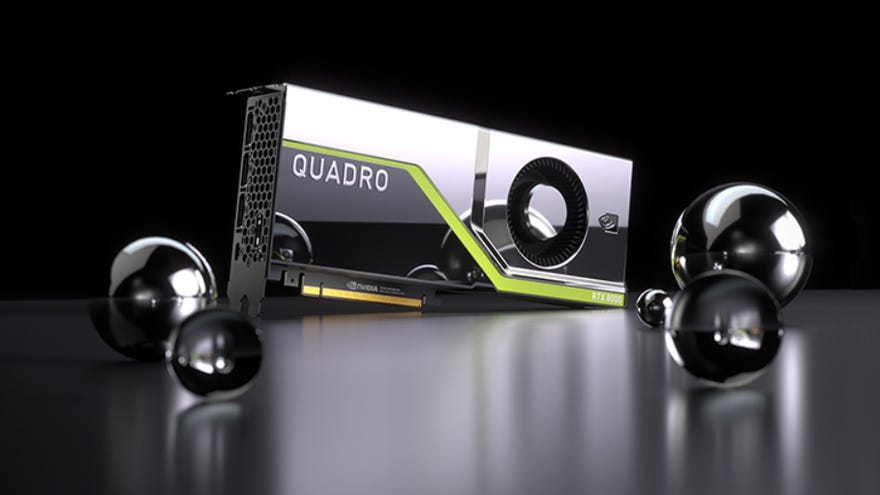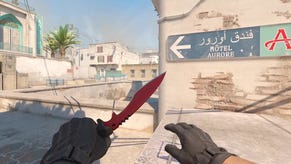Nvidia's first Turing GPUs will be professional Quadro RTX cards
My first Quadro
Well, would you look at that? Nvidia have just lifted the lid on their brand-new RTX graphics cards - and ghee whiz do they look powerful. Don't get too excited just yet, though, as the only cards Nvidia announced last night at computer graphics and animation conference Siggraph are (yep, you guessed it) all professional Quadro RTX models: the Quadro RTX 8000, Quadro RTX 6000 and Quadro RTX 5000.
That said, with Turing now well and truly out of the bag, I reckon we'll most likely see those coveted GTX models get unveiled at Nvidia's big Gamescom event next week. So let's take a look at what's in store, because if the capabilities of Nvidia's new Turing Quadro cards are anything to go by, the consumer GTX versions will make today's best graphics cards look like yesterday's news.
One of Turing's headline features is the arrival of real-time ray tracing. Or, in plain English, the kind of fancy pants lighting techniques we saw demoed at this year's GDC conference when EA's SEED division showed off their Project Pica Pica demo - which, I'm sure you'll agree, looks absolutely stunning. There's also this Star Wars-flavoured Unreal Engine demo from March as well:
To achieve this, Nvidia have packed each Turing GPU with dedicated ray tracing processors called 'RT Cores' (hence the RTX name). These allow things to happen very, very quickly. I'm not going to pretend I know what light and sound travelling through a 3D environment at 10 GigaRays a second means, but it sounds very fast indeed. Thankfully, Nvidia provided some other, more useful numbers to help us get a handle on how Turing compares to Pascal in the ray tracing department, in that it can perform real-time ray tracing operations 25x faster than its predecessor.
Turing also has something that's known as Tensor Cores, which are all to do with AI and deep learning stuff. They can apparently perform up to 500 TRILLION tensor operations a second, whatever those are, according to Nvidia, allowing AI-enhanced features and something called 'deep-learning anti-aliasing' to make things look extra shiny and nice.
And last but not least, Turing GPUs will also feature a new streaming multi-processor architecture that does something else I'm not going to pretend to understand involving adding integer execution units in parallel with floating point datapaths, as well as something I can just about get my head round, which is providing double the amount of cache bandwidth compared to the previous Pascal generation.
What that all actually means in practice is that Turing is epically more powerful than Pascal, delivering "unprecedented levels of performance per core", says Nvidia.
They're also the first Nvidia cards to make use of GDDR6 memory - with the top brass RTX 8000 using a whopping 48GB of it. For those who want some specs, here are some specs from Nvidia's website:
| Quadro RTX 5000 | Quadro RTX 6000 | Quadro RTX 8000 | |
|---|---|---|---|
| CUDA Cores | 3702 | 4608 | 4608 |
| Tensor Cores | 384 | 576 | 576 |
| GPU Memory | 16GB GDDR6 | 24GB GDDR6 | 48GB GDDR6 |
| RT Cores | Yes | Yes | Yes |
So when will the Turing Quadro cards be available? All Nvidia were willing to say on the subject last night is that they'll be available before the end of the year, sometime between October and December. They're not going to be cheap, either, as the Quadro RTX 5000 will set professionals back a massive $2300, the Quadro RTX 6000 will go for an eye-watering $6300, and the big daddy Quadro RTX 8000 a very casual $10,000.
The GTX versions will, hopefully, knock at least one zero off those figures when Nvidia eventually gets round to announcing them - which will almost certainly be at Gamescom next week, if I were a betting woman - but even if the GTX versions possess just a fraction of the Quadro RTX's GPU power, they may well offer the generational leap we've been waiting for.










